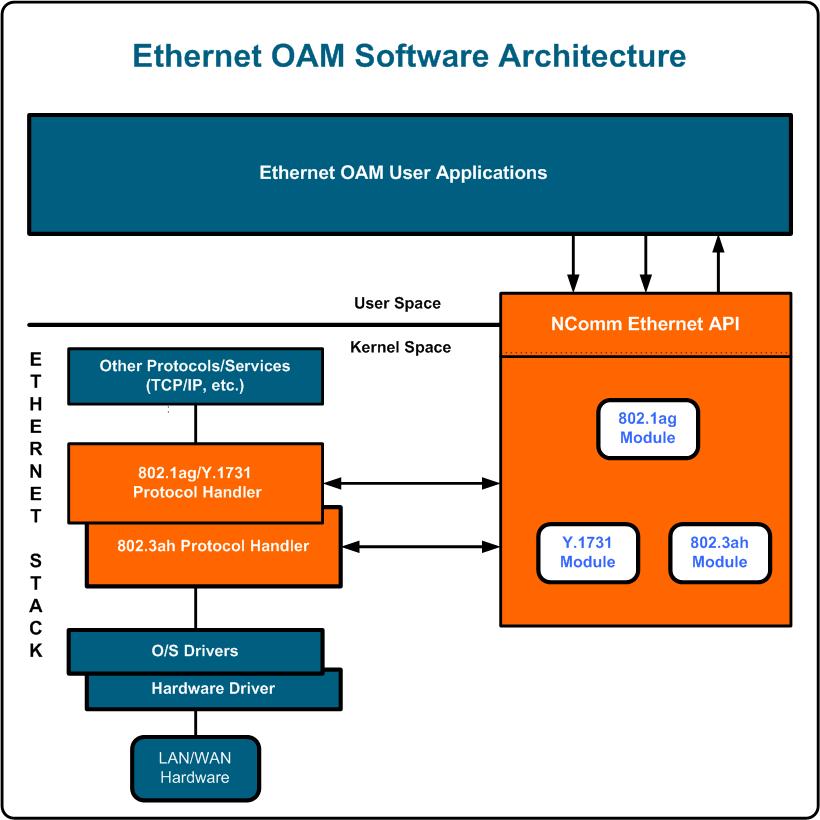Ethernet OAM Software - IEEE 802.1Q/802.1ag
NComm’s 802.1Q/802.1ag software provides a complete source code solution for those developers needing to incorporate standard compliant IEEE 802.1Q/802.1ag software capabilities into their products. The 802.1Q/802.1ag source code is delivered in ANSI C. Operation under the Linux operating system as well as other operating systems is provided. The 802.1Q/802.1ag software has been fully qualified in conformance testing, and NComm will assist in any additional conformance issues that might come up during full product homologation testing.
The architecture of the Ethernet OA&M software module is shown below. The module will implement the Ethernet OA&M requirements of IEEE 802.1Q/802.1ag while allow your application to integrate the feature in to your system.

IEEE 802.1Q/802.1ag Maintenance Domains
The Ethernet OA&M module comes with a full API that allows the application layer to administer the Ethernet OA&M features while the 802.1Q/802.1ag module will perform packet handling. The module can be configured to operate on a bridge or for station operation as needed.
This 802.1Q/802.1ag source code package fully covers IEEE 802.1Q/802.1ag as follows:
|
Connectivity Fault Management (CFM) |
Standard: IEEE 802.1Q/802.1ag Bridge mode and station mode supported Stacked VLANs supported (More than one VLAN tag on packets) |
|
Continuity Check Messages (CCM) |
Generates CCM messages. 3.3ms (and slower) message rates supported Automatically generates CCM messages without application intervention Processes receives CCM messages. Automatically detects: Loss of Continuity Unexpected MEP Cross Connect error Remote Defect indications Unexpected MD/MA level Incorrect CCM interval |
| Loopback Messages (LBM/LBR) |
Upon request of the application, the LBM message will be generated. Automatically responds to LBM messages from external entities. Automatically detects: LBRs received in order LBRs received out of order LBRs missing Measures delay |
|
Link Trace Messages (LTM/LTR) |
Upon request of the application, the LTM message will be generated. Automatically responds to LTM messages from external entities. Automatically detects: LTRs received Unexpected LBRs received Detects intermediate end points |
